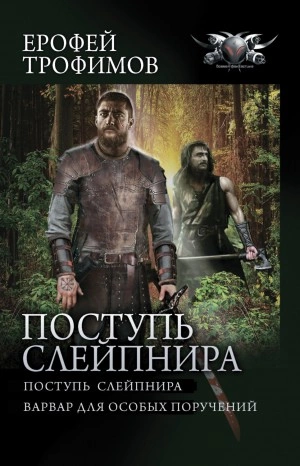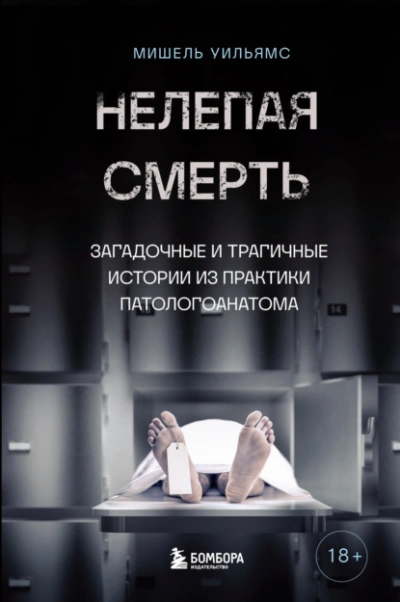Шрифт:
Интервал:
Закладка:
Hume, David. 1788 [1742]. “On the Rise and Progress of the Arts and Sciences.” In Essays and Treatises on Several Subjects, vol. 1. London: T. D. Cadell.
Huston, James L. 1987. The Panic of 1857 and the Coming of the Civil War. Baton Rouge: Louisiana State University Press.
Ibn Khallikan, Ahmad Ibn Muhammad. 1868 [1274]. Biographical Dictionary. Translated from the Arabic by Baron William Mac Guckin De Slane. Paris: Édouard Blot, Oriental Translation Fund of Great Britain and Ireland.
Irwin, Douglas A. 2011. “Anticipating the Great Depression? Gustav Cassel’s Analysis of the Interwar Gold Standard.” Unpublished paper, Dartmouth College.
–—. 2012. Trade Policy Disaster. Cambridge MA: MIT Press.
Isenhour, Cindy. 2012. “On the Challenge of Signalling Ethics without the Stuff: Tales of Conspicuous Green Anti-Consumption.” In James B. Carrier and Peter Luetchford, eds., Ethical Consumption: Social Value and Economic Practice. New York: Berghahn Books.
Jackendoff, Ray. 2009. “Parallels and Nonparallels between Language and Music.” Music Perception: An Interdisciplinary Journal 26(3):195–204.
Jackson, Matthew O., and Leeat Yariv. 2005. “Diffusion in Social Networks.” Économie Publique 16(1):2–16.
Jacobs, Alan, 2016. “The Watchman: What Became of the Christian Intellectuals?” Harper’s Magazine, September, 54–60.
Jevons, William Stanley. 1878. “Commercial Crises and Sun-Spots.” Nature 19:33–37.
Johnson, Edgar H. 1910. “The Economics of Henry George’s ‘Progress and Poverty.’ ” Journal of Political Economy 18(9):714–35.
Johnson, Eric J., and Amos Tversky. 1983. “Affect, Generalization, and the Perception of Risk.” Journal of Personality and Social Psychology 45(1):20–31.
Johnson, Marcia K., and Mary Ann Foley. 1984. “Differentiating Fact from Fantasy: The Reliability of Children’s Memory.” Journal of Social Issues 40(2):33–50.
Johnson, Marcia K., Shahin Hashtroudi, and D. Stephen Lindsay. 1993. “Source Monitoring.” Psychological Bulletin 114(1):3–28.
Jones, Charles M., and Owen A. Lamont. 2002. “Short-Sale Constraints and Stock Returns.” Journal of Financial Economics 66(2–3):207–39.
Jung, Carl. 1919. “Instinct and the Unconscious III.” British Journal of Psychology 10(1):15–23.
Kahn, Richard F. 1931. “The Relation between Home Investment and Unemployment.” Economic Journal 41(162):173–98.
Kahneman, Daniel, and Amos Tversky. 1973. “On the Psychology of Prediction.” Psychological Review 80(4):237–51.
–—. 2000. Choices, Values and Frames. Cambridge: Cambridge University Press.
Kasparov, Garry. 2017. Deep Thinking: Where Machine Intelligence Ends and Human Creativity Begins. New York: PublicAffairs.
Katona, George. 1975. Psychological Economics. New York: Elsevier Scientific Publishing Co.
Katz, Elihu, and Paul F. Lazarsfeld. 1955. Personal Influence: The Part Played by People in the Flow of Mass Communication. New York: The Free Press of Glencoe.
Kemmerer, David. 2014. Cognitive Neuroscience of Language. Hove, East Sussex: Psychology Press.
Kemmerer, Edwin Walter. 1920. High Prices and Deflation. Princeton, NJ: Princeton University Press.
Kempton, Murray. 1998 [1955]. Part of Our Time: Some Ruins and Monuments of the Thirties. New York: New York Review of Books Classics.
Kent, Richard J. 2007. “A 1929 Application of Multiplier Analysis by Keynes.” History of Political Economy 39(3):529–43.
Kermack, William Ogilvy, and Anderson Gray McKendrick. 1927. “A Contribution to the Mathematical Theory of Epidemics.” Proceedings of the Royal Society 115(772):701–21.
Keynes, John Maynard. 1920 [1919]. Economic Consequences of the Peace. London: Macmillan.
–—. 1932. “Economic Possibilities for Our Grandchildren (1930).” In Essays in Persuasion, 358–373. New York: Harcourt Brace.
–—. 1936. The General Theory of Employment, Interest, and Money. London: Palgrave Macmillan.
Kirnarskaya, Dina. 2009. The Natural Musician: On Abilities, Giftedness, and Talent. Oxford: Oxford University Press.
Klages, Mary. 2006. Literary Theory: A Guide for the Perplexed. London: Bloomsbury Academic.
Klein, Melanie. 2002 [1921]. “The Development of a Child.” In Love, Guilt and Reparation: And Other Works 1921–1945. New York: Free Press, 2002.
Klein, Naomi. 2009. No Logo. Tenth Anniversary Edition. New York: Picador. Koopmans, Tjalling. 1947. “Measurement without Theory.” Review of Economics and Statistics 29(3):161–72.
Kozinets, Robert V., Kristine de Valck, Andrea Wojnicki, and Sarah J. S. Wilner. 2010. “Networked Narratives: Understanding Word-of-Mouth Marketing in Online Communities.” Journal of Marketing 74:71–89.
Kuran, Timur. 2012. The Great Divergence: How Islamic Law Held Back the Middle East. Princeton, NJ: Princeton University Press.
Kuran, Timur, and Cass Sunstein. 1999. “Availability Cascades and Risk Regulation.” Stanford Law Review 51(4):683–768.
Kuziemko, Ilyana, and Ebonya Washington. 2015. “Why Did the Democrats Lose the South? Bringing New Data to an Old Debate.” National Bureau of Economic Research Working Paper 21703.
Kydland, Finn E., and Edward C. Prescott. 1982. “Time to Build and Aggregate Fluctuations.” Econometrica 50(6):1345–70.
Laffer, Arthur. 2004. “The Laffer Curve, Past, Present and Future.” Executive Summary Backgrounder No. 1765. The Heritage Foundation.
Lahiri, Kajal, and J. George Wang. 2013. “Evaluating Probability Forecasts for GDP Declines Using Alternative Methodologies.” International Journal of Forecasting 29(1): 175–90.
Lakoff, George, and Mark Johnson. 2003. Metaphors We Live By. Chicago: University of Chicago Press.
Lamberson, P. J. 2016. “Diffusion in Networks.” In Yann Bramoullé, Andrea Galeotti, and Brian Rogers, eds., The Oxford Handbook of the Economics of Networks. Oxford: Oxford University Press.
Lanchester, John. 2018. “Can Economists and Humanists Ever Be Friends?” [“Doesn’t Add Up” in print edition]. New Yorker, July 23, https://www.newyorker.com/magazine/2018/07/23/can-economists-and-humanists-ever-be-friends.
Langlois, Janet L., and Mary E. Durocher. 2011. “The Haunting Fear: Narrative Burdens in the Great Depression.” In Nobody’s Burden: Lessons from the Great Depression on the Struggle for Old-Age Security, 245–67. Lanham, MD: Lexington Books.
League of Nations, Economic and Finance Section. 1922. Brussels Financial Conference, 1920. The Recommendations and Their Application; A Review after Two Years.
Le Bon, Gustave. 1895. Psychologie des foules (The Crowd). Paris: Alcan.
Legrand, J., R. F. Grais, P. Y. Boelle, A. J. Valleron, and A. Flahault. 2007. “Understanding the Dynamics of Ebola Epidemics.” Epidemiology and Infection 135:610–21.
Leonard, Janet L. 2006. “Sexual Selection: Lessons from Hermaphrodite Mating Systems.” Integrative and Comparative Biology 46(4):349–67.
Leonard, Mark. 1997. BritainTM: Renewing Our Identity, https://www.demos.co.uk/files/britaintm.pdf?1240939425.
LeRoy, Stephen F., and Richard D. Porter. 1981. “Stock Price Volatility: Tests Based on Implied
Variance Bounds.” Econometrica 49:97–113.
Leskovec, Jure, Lars Backstrom, and Jon Kleinberg. 2009. “Meme-Tracking and the Dynamics of the News Cycle.” KDD ’09 Proceedings of the 15th ACM SIGKDD International Conference on Knowledge Discovery and Data Mining, 497–506.
Lin,
- Экономика отрасли для ССУЗов - Максим Миронов - Экономика
- Смерть денег. Крах доллара и агония мировой финансовой системы - Джеймс Рикардс - Прочая научная литература
- Краткая история почти всего на свете - Билл Брайсон - Прочая научная литература
- Фабриканты чудес - Владимир Львов - Прочая научная литература
- Экономика за один урок - Генри Хэзлитт - Экономика
- Экономика предприятия: конспект лекций - MCat78 - Экономика
- Экономика предприятия: конспект лекций - Елена Душенькина - Экономика
- Экономическая война против России и сталинская индустриализация - Валентин Катасонов - Экономика
- Последнее изобретение человечества - Джеймс Баррат - Прочая научная литература
- На 100 лет вперед. Искусство долгосрочного мышления, или Как человечество разучилось думать о будущем - Роман Кржнарик - Прочая научная литература / Обществознание / Публицистика







